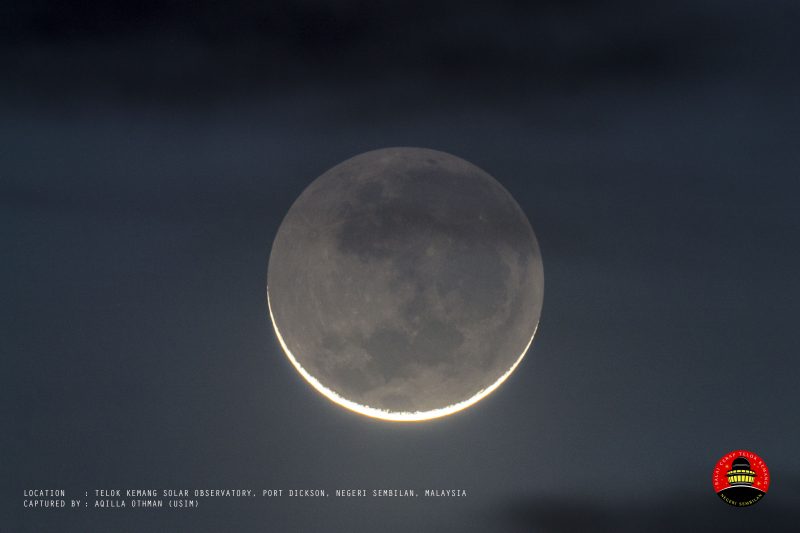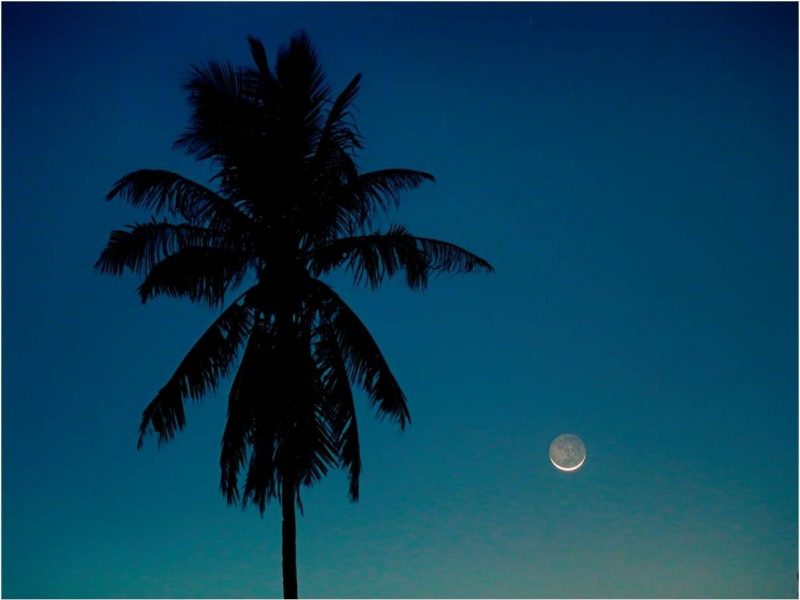
See the young moon the next few days
In 2022, the March new moon falls on March 2 at 17:35 UTC. So you’ll want to start looking for a very slim crescent moon – low in the sky after sunset – on March 3. When you look at a crescent moon shortly after sunset or before sunrise, you can sometimes see not only the bright crescent of the moon, but also the rest of the moon as a dark disk. That pale glow on the unlit part of a crescent moon is light reflected from Earth. It’s called earthshine. If you’re in the Northern Hemisphere, the month of March, around the March equinox, is an excellent time to look for very young moons, that is, slim crescent moons in the west after sunset.
Southern Hemisphere? It’s autumn now in your part of the world. And the autumn angle of the ecliptic is always narrow with respect to the evening horizon. You’ll have to wait a day or two after March 3 to catch the slim crescent and earthshine.
What is earthshine?
To understand earthshine, remember that the moon is a globe, just as Earth is, and that the globe of the moon is always half-illuminated by sunlight. When we see a crescent moon in the west after sunset, or in the east before dawn, we’re seeing just a sliver of the moon’s lighted half.
Now think about seeing a full moon from Earth’s surface. Bright moonlight can illuminate an earthly landscape on nights when the moon is full.
Likewise, whenever we see a crescent moon, a nearly full Earth appears in the moon’s night sky. The full Earth illuminates the lunar landscape. And that is earthshine. It’s light from the nearly full Earth shining on the moon.
So next time you see a crescent moon, expand your thinking to include the Earth under your feet.
See the glow on the unlit portion of the moon for what it really is, sunlight reflected from the nearly full Earth shining in the moon’s sky.


Enjoying EarthSky? Sign up for our free daily newsletter today!
Bottom line: Earthshine – the dim glow on the darkened portion of a crescent moon – is light from Earth cast on the night side of the moon. In 2022, from the Northern Hemisphere, start watching for it around the evening of March 3.
The post What is earthshine? first appeared on EarthSky.
0 Commentaires